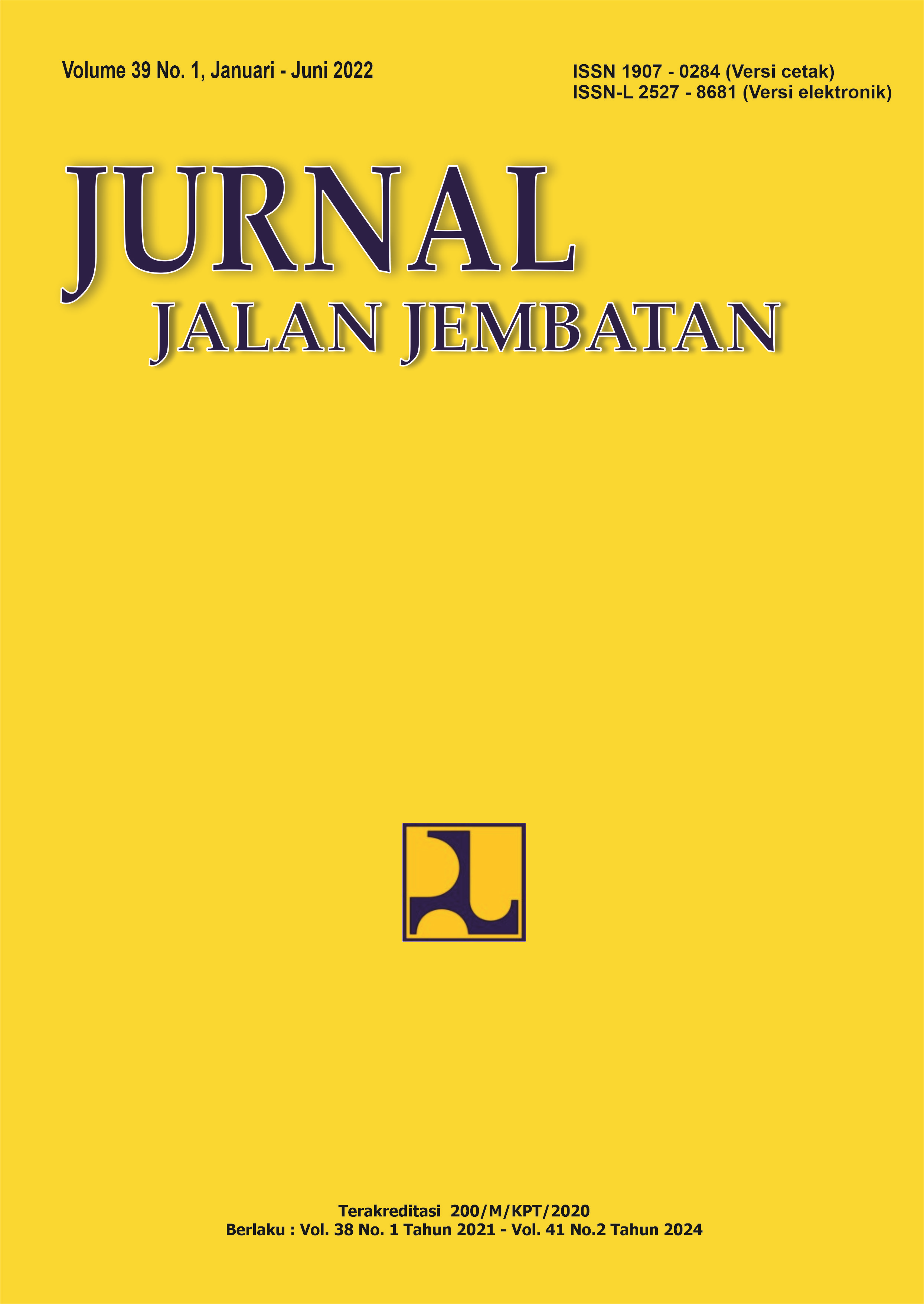SLOPE STABILITY ANALYSIS OF WEATHERED ROCK APPLYING GENERALIZED HOEK-BROWN AND EQUIVALENT MOHR-COULOMB FAILURE CRITERION
Main Article Content
Abstract
In the soil failure model, the strength of soil masses is controlled by the friction of grains, as analogous to the strength of intact rock in the rock mass failure. Discontinuity strength is obviously not considered in the soil failure criterion. Slopes of weathered rock masses analyzed in this paper were located on the two cut slopes of highway construction on the southern coast of East Java, Serang Beach – Malang Regency Section. The rock mechanic approach was applied by using a non-linear failure criterion of generalized Hoek-Brown. This criterion was correlated to the linear failure criterion of Mohr-Coulomb which was common in a slope stability analysis practice. Analysis using generalized Hoek-Brown was always generating critical factor of safety (FS), compared to the Mohr-Coulomb equivalent with FS difference of 50.5% and 16.03% at the STA. 16+350 and STA. +14+125 respectively. Critical slip surfaces produced by generalized Hoek-Brown were always laying on the shallower area, compared to the Mohr-Coulomb critical slip surfaces.
Keywords: weathered rock slope, generalized hoek-brown, equivalent mohr-coulomb, geological strength index, southern coast java road.
Article Details
Authors who publish in this journal agree to the following terms:
-
Authors retain copyright and grant the journal the right of first publication with the work simultaneously licensed under a Creative Commons Attribution License, which allows others to share the work with acknowledgment of the work's authorship and initial publication in this journal.
-
Authors may enter into additional contractual arrangements for the non-exclusive distribution of the journal's published version of the work (e.g., post it to an institutional repository or publish it in a book), with acknowledgment of its initial publication in this journal.
-
Authors are permitted and encouraged to post their work online (e.g., in institutional repositories or on their website) as it can lead to productive exchanges, as well as earlier and greater citation of the published work.
Each submitted manuscript must be accompanied by a "Manuscript Originality Statement" and a "Copyright Transfer Statement".

